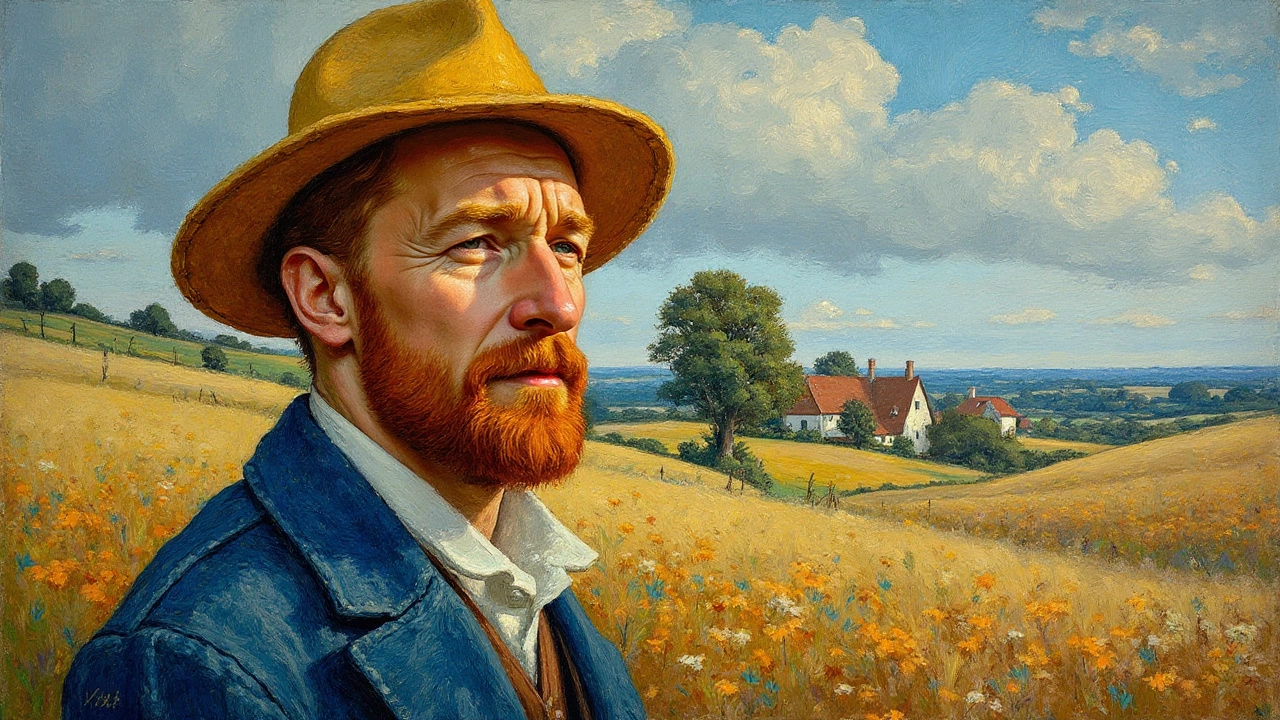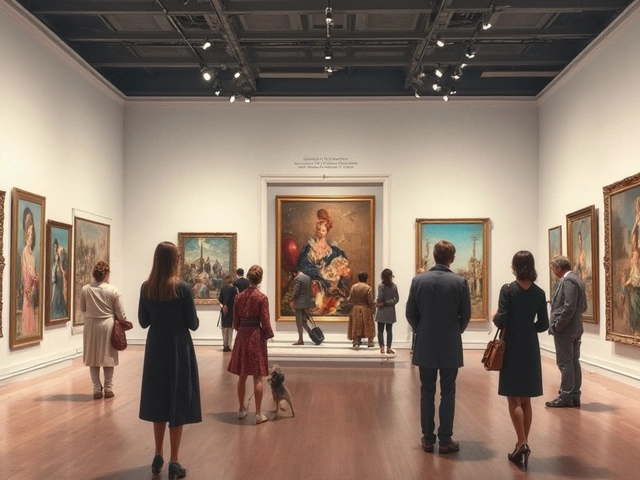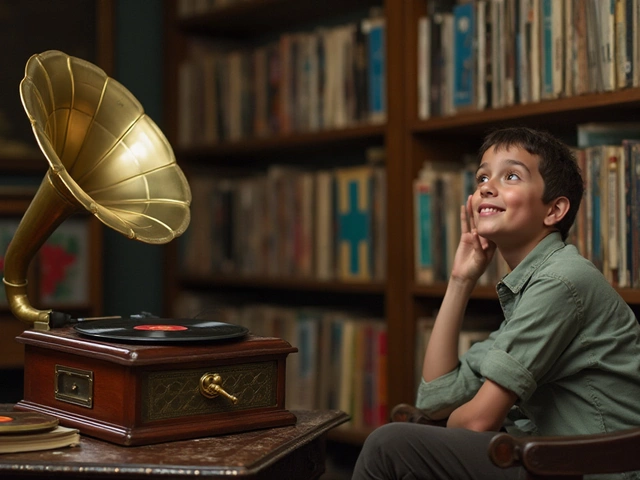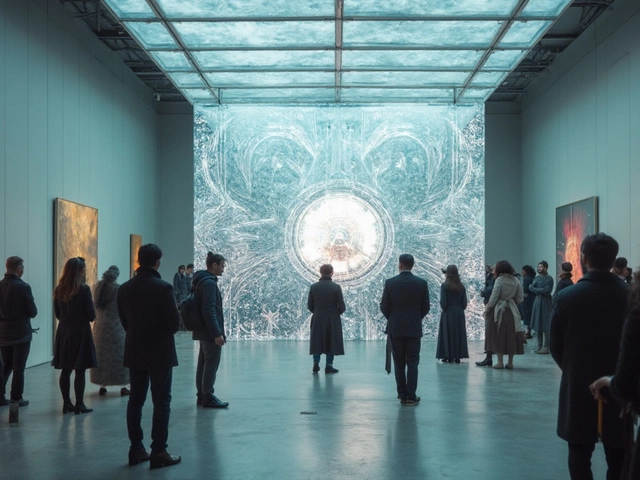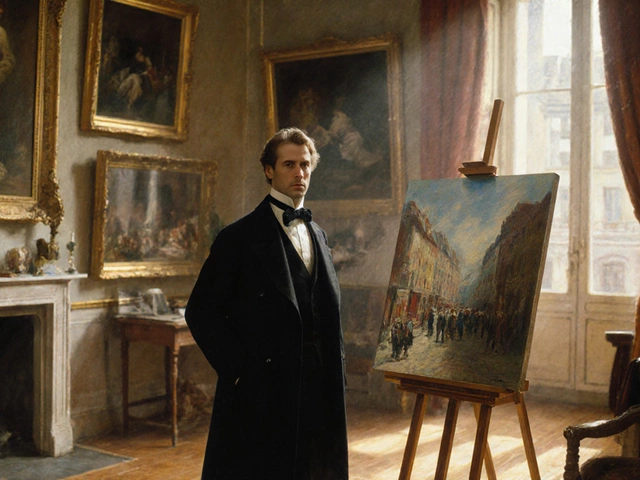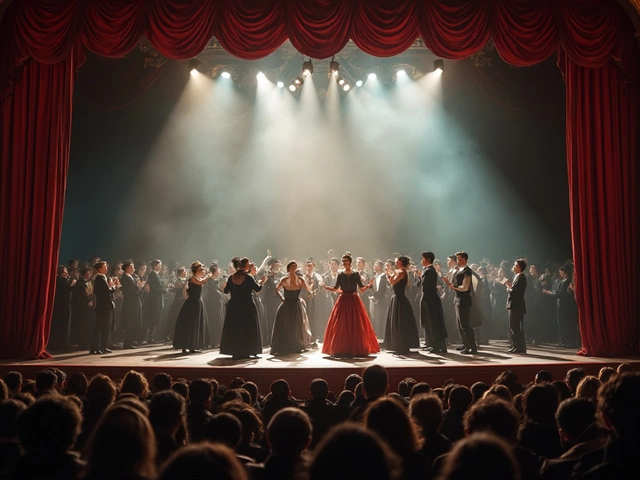Throughout history, self-portraits have been more than mere reflections in the mirror; they are windows into the artist's world. A self-portrait tells a story, revealing much about its creator and the era in which it was painted. These unique works of art not only showcase the artist's skill but also their perception of self and society.
Among these captivating pieces, some have reached staggering heights in market value, capturing the imaginations of collectors and art lovers worldwide. This discussion explores the most expensive self-portraits ever sold, shedding light on what makes them so extraordinary both in historical significance and financial terms.
- History and Evolution of Self-Portraits
- Famous Artists and Their Iconic Self-Portraits
- Record-Breaking Sales at Auctions
- Factors That Influence the Value of Self-Portraits
History and Evolution of Self-Portraits
The journey of self-portraiture is as old as art itself, serving as a vivid tapestry of human history, belief, and identity. Early self-portraits date back to the Egyptian and Greco-Roman eras, where artists often depicted themselves in sculptures and frescoes, albeit subtly. These preliminary works were not always direct interpretations but rather a fusion of myth and reality. By the Renaissance, a profound transformation occurred, with masters like Albrecht Dürer taking center stage. Dürer's self-examination, through his contemplative and almost divine portrayals, set the stage for an epochal shift, where the artist's identity began to be celebrated as a subject worthy of introspection and expression.
This period marked a burgeoning interest in humanism, where individual identity, personal achievement, and self-awareness gained prominence. Artists such as Leonardo da Vinci and Rembrandt van Rijn expanded on this trend, using self-portraits to not only showcase their skills but also communicate their personal narratives. Rembrandt, in particular, left a remarkable legacy with his self-portraits that spanned his lifetime. His works reveal the ebb and flow of personal fortune and style, providing an intimate diary of sorts through paint. "There is no other art form that delves into the heart of the artist like the self-portrait," remarked art historian Simon Schama in
A Face to the World: On Self-Portraits.
The evolution continued into the 19th and 20th centuries, with artists like Vincent van Gogh and Egon Schiele pushing boundaries with their raw and emotive self-portraits. Van Gogh's work, characterized by bright colors and emotion-filled brushstrokes, mirrored the intense turbulence within his soul. His self-portraiture is perhaps epitomized by his piece Self-Portrait with Bandaged Ear, which reflects both personal struggle and unyielding determination. Moving into the modern era, self-portraits adapted again, embracing new mediums and technologies. The invention of photography provided new opportunities, allowing artists to explore identity and perception with more precision.
Today, self-portraits continue to evolve, becoming more than just physical representations. In the digital age, this evolution is apparent in the rise of the 'selfie', a ubiquitous element of contemporary culture. This transformation raises intriguing questions about authenticity and projection in art. Are we capturing true identity or constructing curated versions of ourselves? The internet and social media have empowered a slew of new artists, expanding the canvas to virtual galleries worldwide. While the method and medium may change, the self-portrait remains a profound exploration of self, providing unique insights into the human condition across time.
Famous Artists and Their Iconic Self-Portraits
When we think about famous portrait painting, few images are as captivating as the self-portraits painted by art legends. These artworks not only reflect the artists' skills but also offer a glimpse into their lives and unique perspectives. One of the most prolific self-portraitists, Rembrandt van Rijn, painted over 40 self-portraits throughout his lifetime. His works provide an enthralling narrative of his aging process, career fluctuations, and emotional states. Each piece is a chapter of its own, conveyed through the profound depth of expression that Rembrandt mastered. His use of lighting and shadow became his signature technique, making his self-portraits timeless pieces of art. They were not just about likeness but involved capturing the soul and complexity of human emotions.
Similarly, Vincent van Gogh's self-portraits remain some of the most celebrated artworks in the realm of art market value. Despite his tumultuous life, Van Gogh produced over 30 self-portraits in a period of just three years. This prolific period of self-exploration was characterized by explosive color palettes and intense, haunting expressions. One of his most famous self-portraits, painted in 1889 after he committed himself to an asylum, reflects his inner turmoil with its swirling blues and bold brushwork. Beyond their visual appeal, what makes Van Gogh's self-portraits remarkable is their ability to convey the psychological complexities of the artist. He once said,
"I am seeking. I am striving. I am in it with all my heart."
Another legend, Frida Kahlo, is renowned for how she infused her own experiences and pain into her self-portraits. She used her art as a personal manifesto, blending symbolic imagery with her Mexican heritage. Kahlo created 55 distinctive self-portraits, depicting her physical and emotional suffering. Her 1940 masterpiece, "Self-Portrait with Thorn Necklace and Hummingbird," is emblematic of her style — full of vibrancy and folk-art inspirations while conveying deep personal symbolism. Kahlo’s ability to weave her identity into every stroke makes her self-portraits intensely personal yet universally relatable. Her work transcends beyond simple visuals, offering a powerful testament to strength and resilience.
Pablo Picasso, a master known for his innovation and fearlessness in pushing boundaries, also dabbled in self-portraits throughout different phases of his artistic journey. Picasso’s approach to self-portraits evolved dramatically over the years, showcasing his versatility. His early works in the Blue and Rose periods portrayed melancholy and tenderness, while his ventures into Cubism deconstructed his own face into abstract geometric shapes. These self-portraits serve as experiments in artistic style and personal identity, revealing Picasso’s ever-changing perception of himself and his art.
The Legacy of Self-Portraits
The legacy these artists leave behind is not only a testament to their extraordinary talents but also an intimate peek into their worlds. As exemplified by the self-portraits of Rembrandt, Van Gogh, Kahlo, and Picasso, these works are not frozen in time; they are vivid stories that speak to kindred spirits across generations. In these celebrated artists' hands, self-portraiture becomes a window through which viewers can explore the depths of the human psyche, observe changing artistic styles, and continue to understand the eternal quest for self-awareness.
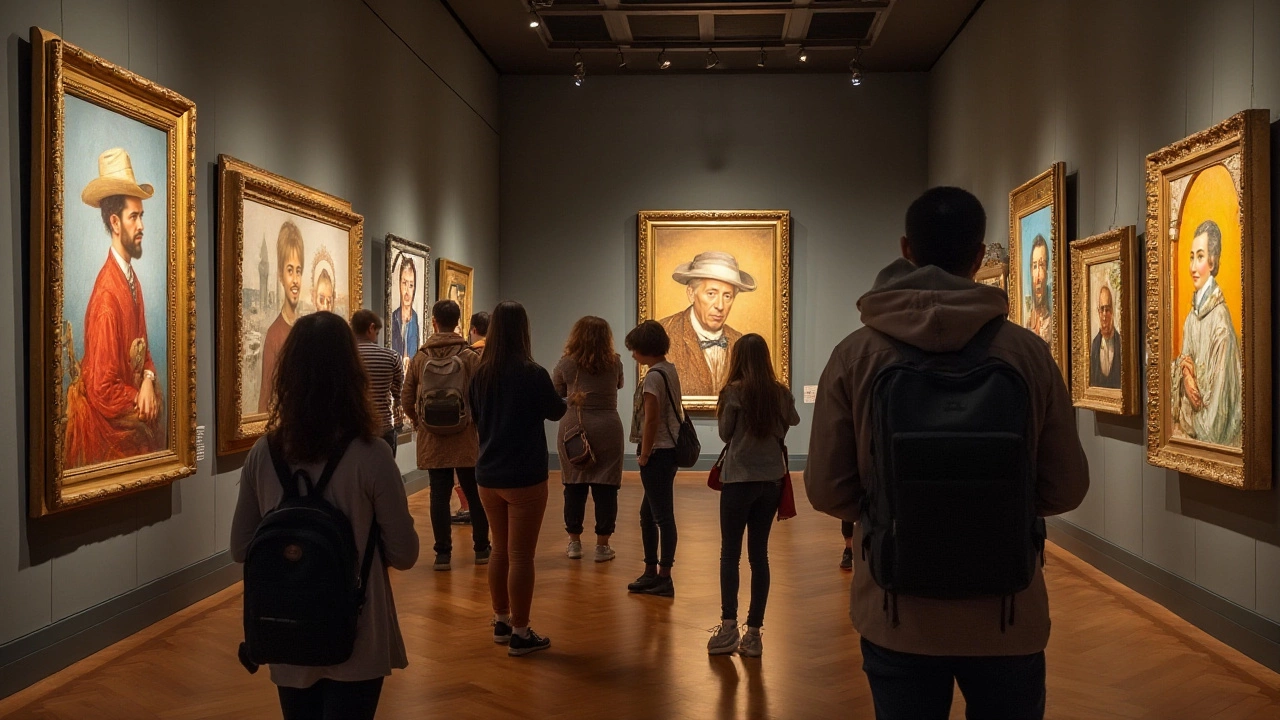
Record-Breaking Sales at Auctions
The art market has seen incredible surges in the prices fetched by self-portraits at auctions, showcasing the immense financial and sentimental value these works hold. Among these, the self-portraits of renowned artists stand out as benchmarks in the art world. One such piece is Vincent van Gogh's vivid and emotional self-portrait, painted in 1889, which sold for an astounding $71.5 million at auction in 1998. This sale highlighted both the persistent allure of van Gogh's work and the intense competition among collectors to own a piece of his transcendent legacy.
Another record-breaking sale can be seen with Frida Kahlo's self-portrait, 'Diego y yo.' This evocative painting smashed expectations by selling for nearly $35 million in 2021, setting a new auction record for Latin American art. Kahlo's unique blend of deeply personal expression and profound cultural insight continues to captivate audiences, making her one of the most celebrated artists in the contemporary art market. Indeed, the rise in prices demonstrates how these art pieces become vessels of both historical narratives and personal identity, traits highly coveted by connoisseurs around the globe.
The market for self-portraits isn't only limited to the revered artists of the past. Modern and contemporary artists also find their self-portraits reaching remarkable values. Take Cindy Sherman's self-portraits, which delve into identity and transformation. Her 'Untitled #96' was sold for an eye-opening $3.89 million in 2011, achieving the highest price ever for a photograph at that time. These monumental sales indicate a growing recognition of self-portraiture's unique ability to tap into universal elements of human experience while reflecting the artist's individual journey.
The factors driving these impressive auction results are numerous. They extend beyond the mere reputation of the artist, delving into the thematic depth, historical significance, and emotional resonance encapsulated within the artwork. Famous portrait painting pieces like these often become symbols of the broader movements and ideas that defined their periods, helping to elevate their prestige and desirability among collectors. An understanding of the intersection between market trends, historical art movements, and personal storytelling can provide a fuller picture of why these expensive self-portrait artworks reach such heights in the modern auction landscape.
“The fascination with self-portraits in auctions reflects a deeper quest for understanding the human condition through the eyes and soul of the artist,” as noted by art historian Dr. Lisa Horowitz. This insight unveils how the private and public domains converge through these remarkable pieces, attributing to their ever-growing financial and emotional value.
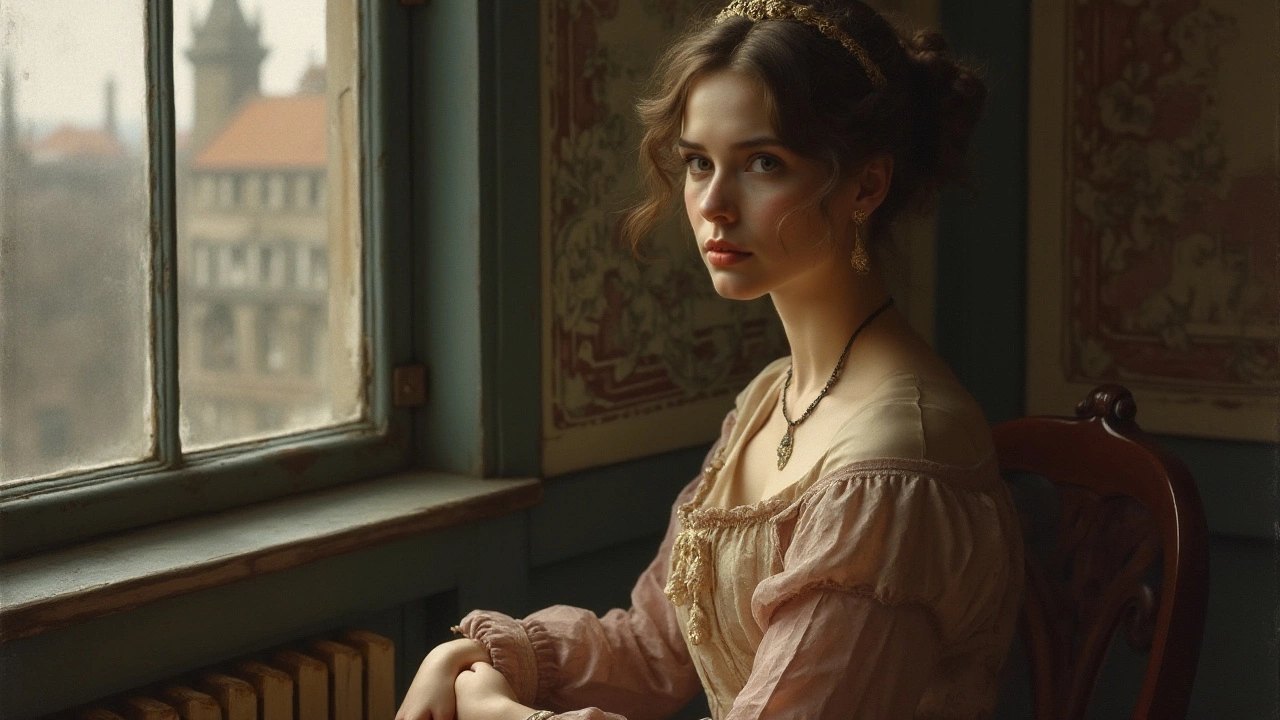
Factors That Influence the Value of Self-Portraits
Understanding what drives the astronomical prices of self-portraits in the art market requires diving into a blend of artistry, rarity, and cultural significance. Firstly, the famous portrait painting of a celebrated artist carries inherent value due to the reputation and historical importance associated with the artist. Iconic names like Vincent van Gogh and Frida Kahlo immediately attract attention and bid wars, largely because their self-portraits are seen not just as paintings, but as irreplaceable slices of art history.
Moreover, the uniqueness and condition of a self-portrait significantly impact its worth. Art collectors and museums often pay a premium for works that are in exceptional condition or those that showcase a crucial moment in an artist's career. Many self-portraits double as a profound personal statement from the artist, reflecting both introspection and cultural commentary, which can increase the intrigue and, consequently, the price.
A celebrated art historian once said, "A self-portrait is the artist's most significant witness to time."
Another pivotal factor is provenance, the documented history of the artwork’s ownership. Pieces with a well-documented and illustrious past, such as ownership by royalty or famous figures, fetch higher prices, adding to the artwork’s mystique and importance. The story behind the self-portrait can be as valuable as the physical piece itself, intertwining narratives of creation and journey from studio to auction house. Notably, the market trends and demand also influence the valuation. Economic factors may sway art prices, with some periods witnessing more dynamic fluctuations than others.
Additionally, technological advancements and media proliferation have brought art to a broader audience, increasing awareness and demand for self-portraits through digital exhibitions and online auctions. The global reach means that more international collectors can participate, often resulting in competitive bidding that drives prices further up. These trends indicate that the future of expensive self-portrait transactions may evolve, contingent on how collectors perceive and interact with art mediums today versus traditionally.
As we consider the future of self-portrait valuations, it's fascinating to ponder how new artists interpret this classic genre. Contemporary artists might incorporate innovative techniques or modern materials, challenging traditional notions and possibly influencing value perceptions in both enthusiasts and collectors alike. These evolving perspectives continue to intrigue and challenge the fine line between art expression and monetary evaluation, making self-portraits some of the most captivating pieces to watch in the art world.
